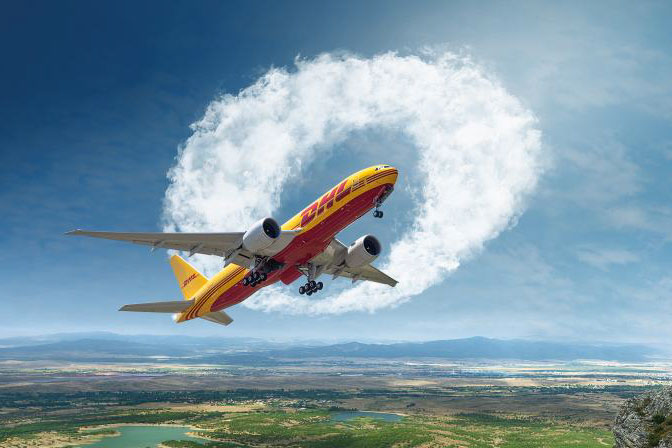
# Creating ‘Green Flight Paths’ for Sustainable Aviation
### **Innovative Research Suggests Eco-Friendly Corridors to Expedite Aviation’s Shift to Sustainable Fuels**
In an exciting breakthrough for the decarbonization of the aviation sector, researchers from Heriot-Watt University and the American University of Sharjah have suggested developing “green flight paths” aimed at lowering emissions along the world’s most heavily traveled long-haul routes. This approach, which emphasizes the utilization of Sustainable Aviation Fuels (SAF), could hasten aviation’s move away from conventional fossil fuels, benefiting both the planet and the economy worldwide. The findings are explained in the journal *Energy & Environmental Science*, October 2024, under the DOI [10.1039/D4EE02472A](https://doi.org/10.1039/D4EE02472A).
### **Targeting High-Impact Routes: London to Dubai**
The study concentrates on bustling international corridors like the London Heathrow–Dubai route, recognized for its substantial passenger volume and elevated CO₂ emissions. Dubai International and London Heathrow are among the leading global airports in terms of total international passengers. Furthermore, they play a significant role in international aviation emissions, making them prime candidates for showcasing the effectiveness of SAF on “green flight paths.”
#### **London Heathrow’s Pioneering Role in SAF Integration**
Heathrow has begun efforts to incorporate SAF into its fuel composition, targeting an ambitious goal of 11% of its overall fuel use by 2030. According to Professor Steve Griffiths, Vice Chancellor for Research at the American University of Sharjah, both the UK and UAE stand poised to spearhead the global initiative to implement green aviation technologies. “Given the UAE and UK’s reliance on long-haul air travel, they have a unique opportunity to lead in establishing green flight paths to showcase sustainable aviation fuels in action,” he states.
### **The Mechanism Behind Green Flight Paths**
Central to these green flight paths is the utilization of Sustainable Aviation Fuel (SAF). SAF originates from non-petroleum resources such as biofuels, synthetic fuels, and oils derived from waste, designed to generate up to 80% fewer lifecycle greenhouse gas emissions compared to standard jet fuels. Currently, SAF can be blended with conventional jet fuel and deployed in existing aircraft, eliminating the need for engine modifications or new infrastructure. This compatibility is a significant benefit, alleviating the logistical challenges often linked with adopting new fuel technologies.
#### **Obstacles to Increasing SAF Production**
While the potential is promising, current SAF production levels fall significantly short of meeting industry objectives. Presently, SAF production constitutes merely 0.1% of the quantities required to meet aviation’s net-zero emissions targets for 2050. The main challenge lies in the economics: SAF production is still costly, and expanding it for widespread application demands considerably more investment — something that could be incentivized through initiatives like green flight paths.
In his reflections, Professor John Andresen of Heriot-Watt University likens this effort to analogous green shipping corridors being planned for the maritime sector. He underscores the critical need: “A similar strategy for prioritizing long-haul flight segments is becoming increasingly vital to propel the global production and utilization of net-zero SAF technologies.”
### **Economic and Environmental Necessities**
To yield a significant impact, the researchers contend that flight routes with high traffic and emissions should be prioritized. It’s not solely a matter of technology; it involves equity and accountability. A crucial component of the research highlights that only around 10% of the global population currently utilizes air travel. Given that these flights disproportionately contribute to global emissions, it seems logical, according to the researchers, to focus decarbonization efforts on regions and sectors that are heavily reliant on aviation.
This sharply contrasts with the idea that all sectors and populations share equal responsibility for emission reductions. Countries like the UK and the UAE, which gain considerable economic and social advantages from aviation, carry a greater responsibility and thus a stronger incentive to invest in advancements such as SAF.
### **Aiming for a Sustainable Future in Aviation**
Transitioning the aviation industry to more sustainable practices poses a monumental yet essential challenge in battling climate change. While green flight paths will not serve as a panacea, they represent a significant initial step towards large-scale SAF adoption—particularly on long-haul routes where their impact could be most profound.
Developing these green corridors could encourage substantial investments from airlines, fuel companies, and governments, potentially overcoming the financial hurdles that currently block SAF production. Moreover, as more flights begin using SAF, production costs are expected to decline through economies of scale, spurring a wider industry transition toward low-emission flying.
By establishing green flight paths between high-traffic hubs like London and Dubai, the aviation sector may start to fulfill its potential for mitigating its considerable carbon footprint while ensuring global connectivity remains intact.
—
### **Glossary of Terms**
– **Sustainable